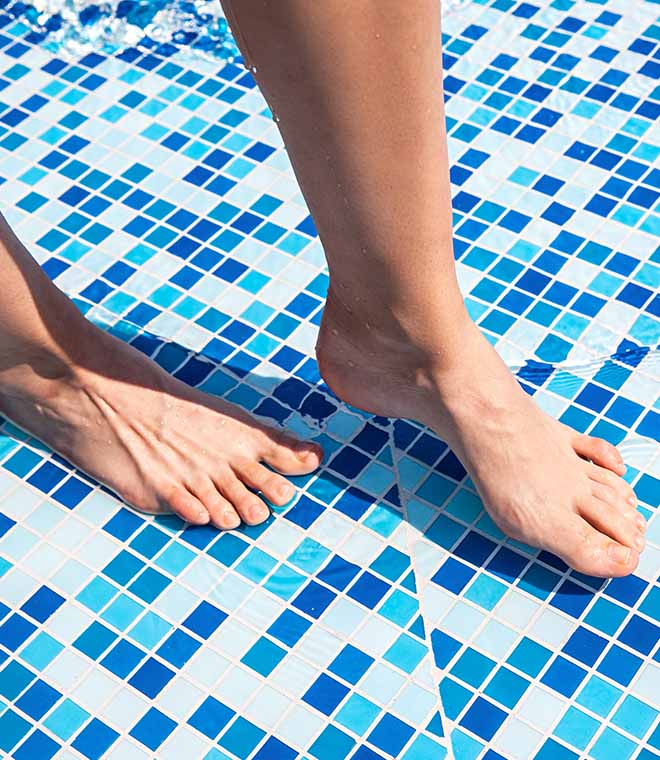Health
What are the different types of foot fungus?
By Anna H. Chacon, MD, FAAD May 06, 2022 • 4 min
Fungal infections of the foot are typically superficial conditions that affect the outer layers of the skin or the nails. Two of the most common foot fungus infections are tinea pedis, also known as athlete’s foot, and onychomycosis, a fungal infection of the nails.
Different types of foot fungus infections
Fungal infections of the foot and nails are caused by dermatophytes, molds and yeasts.
Dermatophytes are a type of fungus that requires keratin to grow, and these fungi are the most common cause of fungal skin and nail infections. Some dermatophytes spread from person to person through direct contact, while others may spread through soil, animal hosts or fomites—objects that have been touched by an infected person and carry the organism, which can be picked up by other people. Athlete’s foot is the most common fungal foot infection caused by dermatophytes.
Nondermatophytic molds can cause a range of health problems, including fungal infections of the nails.
Yeasts are a fungus known as Candida, which lives on the skin and inside the body, usually without causing problems. But if Candida grows out of control, it can cause a range of skin and foot infections, depending on the species. Candida infections on the skin aren’t generally contagious, although it’s possible for people with a weakened immune system to catch this type of infection.
Symptoms and treatments for foot fungus
A fungal infection of the foot may cause a range of symptoms, including itching, scaling, peeling and cracking. Foot fungus is treatable with over-the-counter (OTC) medications, but severe cases may require prescription medications.
Fungal nail infections can cause thickening or discoloration of the affected toenails. These are best treated with oral medications, since topical treatments are generally ineffective.
Athlete’s foot and toenail fungus are common fungal infections that affect the feet, and the sooner you seek treatment, the better the chances of a quick recovery. While toenail fungus typically requires treatment with a prescription medication, you may be able to treat athlete’s foot with over-the-counter medications.
If your athlete’s foot is causing considerable pain or itching, or it’s causing cracking, bleeding or appears inflamed or infected, see your healthcare provider for evaluation and treatment.
Published May 2022.
Sources:
1. https://www.aafp.org/afp/2003/0101/p101.html
2. https://medlineplus.gov/ency/article/000880.htm
3. https://www.ncbi.nlm.nih.gov/pmc/articles/PMC3346908/
4. https://www.hindawi.com/journals/drp/2018/8164757/
5. https://www.ncbi.nlm.nih.gov/books/NBK279547/
6. https://www.ncbi.nlm.nih.gov/books/NBK470421/



